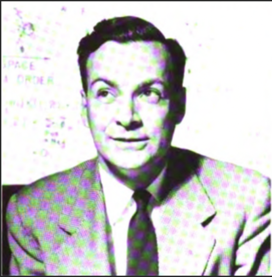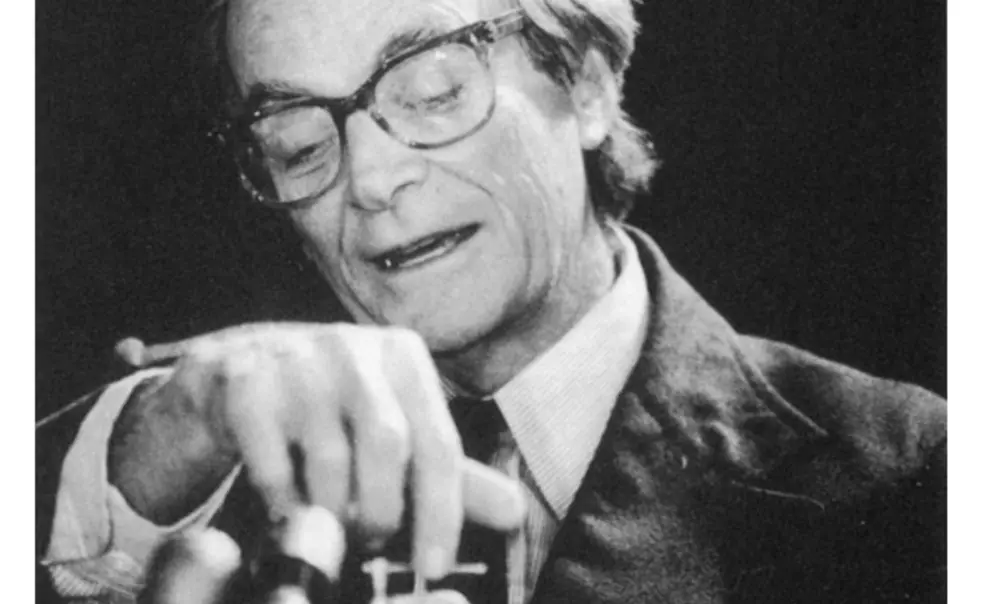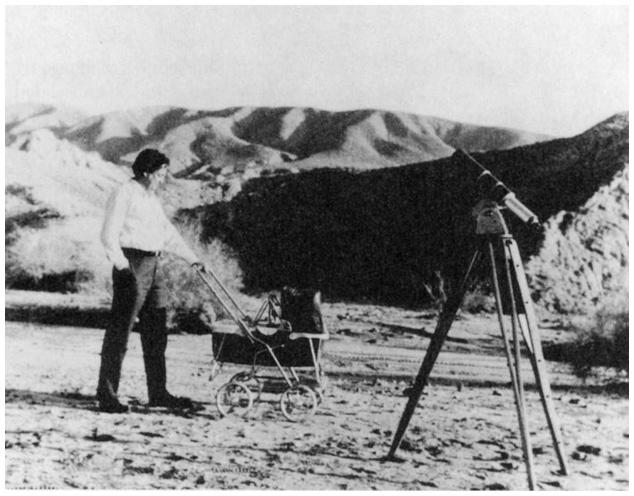The Magician: Exploring the Genius of Richard Feynman *42
Alan Lightman, a professor of science and writing at the Massachusetts Institute of Technology, directs M.I.T.’s Program in Writing and Humanistic Studies. He has written many books, including the just-published Einstein’s Dreams, a novel. This review, adapted from The New York Review of Books of December 17, 1992, is reprinted by permission of the original publisher.
Richard Feynman was the Michael Jordan of physics. His intellectual leaps, seemingly weightless, defied explanation. His teammates on the high-school mathematics team recall that Feynman. “would get this unstudied insight while the problem was still being read out, and his opponents, before they could begin to compute, would see him ostentatiously write a single number and draw a circle around it. Then he would let out a loud sigh.” At the age of twenty- three, while a Princeton colleague looked on in amazement, Feynman stood at the blackboard and discovered a proof of an important proposition of physics only loosely conjectured eight years earlier by the Nobelist Paul Dirac. In 1960, in his early forties and restless and unable to find a physics problem worth working on, Feynman taught himself enough biology to make an original discovery of how mutations work in genes. When a hopeful colleague would walk into Feynman's office with a new result, representing perhaps months of calculations, he would often discover that Feynman already knew not only that result, but also a more sweeping one, which he kept in his file drawer and regarded as below the level of publishability.
Richard Feynman was a legend, but his scientific genius alone would not have made the legend. It was also his style. He was stubborn, irreverent, unrefined, uncultured, proud, playful, intensely curious, and highly original in all things. He was one of a kind. He had a mystique. There are hundreds of "Feynman stories," some told by Feynman himself in his popular book Surely You're Joking, Mr. Feynman!, and others passed along by word of mouth from one physicist to another, like beheld visitations passed from one disciple to another. On February 10, 1986, the public witnessed a Feynman story in the making. Feynman, a member of the committee investigating the explosion of the space shuttle Challenger, demonstrated the flaw that had caused the disaster. In an experiment of deadly simplicity, he dropped one of the O- ring seals from the shuttle into a glass of ice water, the temperature of the air on the day of the launch, and showed that the rubbery seal lost its resilience when squeezed under such cold conditions. The O-ring story was one of the last. Feynman died two years later.

James Gleick, the author of the widely read book Chaos, has taken on the daunting challenge of capturing the real Feynman, the scientist and the human being. Gleick never met Feynman. But he interviewed more than a hundred people, including Feynman's family and many leading physicists, obtained unpublished letters and notes by Feynman and others, talked to a number of Feynman's woman friends (who remain discreetly discreetly unidentified in the book), got documents from the F.B.I. and C.I.A. under the Freedom of Information Act, and read hundreds of pages of unpublished interviews of Feynman by the science historian Charles Weiner. The result is a thorough and masterful portrait of one of the great minds of the century. In describing not only Feynman but the physicists around him, Gleick also succeeds in giving us a rare insight into the scientific community, its surprising diversity of personalities, its values, its mentality.
Richard Phillips Feynman was born on May 11, 1918, the son of Jews of Eastern European ancestry, and grew up in Far Rockaway (Brooklyn), New York. The science Wunderkind tinkered with radio sets, gathering spare parts from around the neighborhood. Many theoretical physicists like Feynman, even the pure pencil-and-paper types, spent their childhoods building things, but Feynman retained throughout his life a tactile, immediate sense of physical phenomena. Even his mathematical calculations have a certain unfussy, muscular style. Like so many other socially fragile budding scientists, Feynman sought refuge in science and math, but with an emphasis on the practical side of things. His manliness, as he saw it, would come from his ability to do things with his hands. Correspondingly, he avoided all "delicate" pursuits, such as poetry, drawing, literature, and music. In fact, Feynman put little stock in the humanities, which he regarded as slippery and inferior, and even less in humanists.
In the fall of 1935, Feynman entered the Massachusetts Institute of Technology. He fit in. At M.I.T., everybody was socially inept, athletically feeble, and glued to science like bugs on fresh cement. Feynman easily skipped first-year calculus and taught himself quantum mechanics before his sophomore year. In his junior year, he became engaged to Arline Greenbaum, whom he had met a few years earlier back home and who became the love of his life besides physics.
Where M.I.T. was working class and unbuttoned, Princeton was patrician and genteel. The afternoon Feynman arrived as a graduate student, in the fall of 1939, he was invited to a tea with Dean of the Graduate School Luther P. Eisenhart. As he stood uneasily in his suit, the dean’s wife, a lioness of Princeton society, said to him, “Would you like cream or lemon in your tea, sir?”
“Both, please,” blurted the country boy from Far Rockaway.
“Surely you’re joking, Mr. Feynman!” said Mrs. Eisenhart. Forever after, Feynman hated people who used manners and culture to make him feel small. He became aggressively unrefined.
Around this time, Arline, who had been suffering from fevers and fatigue, was diagnosed with tuberculosis. She was to spend the rest of her short life very ill and in sanatoriums. Against his parents’ strong objections and dread, Feynman married Arline. In March of 1943, his Ph.D. in hand, Feynman and Arline took the train to Los Alamos, New Mexico. Arline checked in to Presbyterian Sanatorium, in Santa Fe. Feynman lived in the Barracks at Los Alamos, where he worked on the Manhattan Project.
Arline died in the summer of 1945. Two years later, at a frustrating impasse in his theoretical work as a Cornell professor, the twenty-nine-year-old Feynman wrote a letter to his dead wife. The letter, placed in a box and never again read until after Feynman’s death, was discovered by Gleick and, to my mind, is the most astonishing revelation in Genius. “I adore you, sweetheart….,” Feynman wrote. “Now I know my darling wife that it is right to do what I have delayed in doing…I want to tell you I love you. I want to love you. I always will love you. I find it hard to understand in my mind what it means to love you after you are dead—but I don’t know your new address.”
Arline’s death was the great tragedy of Feynman never again let anyone get close to him, although he had many affairs, a second brief (and unpleasant) marriage, and a third satisfying marriage, to Gweneth Howarth, with whom he had two children.
Feynman eventually emerged from his slump at Cornell and, in late 1940s, did the work that won him the Nobel Prize: a theory for how the subatomic electrons interact with electromagnetic radiation (e.g., radio waves) and other charged particles. His theory, called quantum electrodynamics, has been confirmed by experiments to a greater accuracy than any other theory of nature. Quantum electrodynamics explains all electrical and magnetic phenomena, which include everything in daily life except gravity. Feynman shared his Nobel with Shinichiro Tomonaga and Julian Schwinger, who independently had derived alternative formulations of quantum electrodynamics. But Schwinger’s formulation was much harder to work with than Feynman’s. In fact, Schwinger was the antiparticle of Feynman. Schwinger dressed expensively and meticulously, drove a black Cadillac, spoke in a perfect sentences with every subordinate clause duly closed, lectured without notes, and prided himself in arriving at the end of complex mathematical calculations with no dust on his shoes from taking an occasional blind alley.
Feynman’s two other major accomplishments in physics, both of Nobel caliber, came about at the California Institute of Technology, where he spent the last half of his life. He developed a theoretical explanation for superfluids, fluids that are totally frictionless. And he worked out a theory for the weak nuclear force, one of the two kinds of nuclear forces.
At Caltech, Feynman also became seriously interested in education, although he never had the patience to supervise doctoral students one on one. In 1961, Caltech decided to revise its physics curriculum, and asked Feynman to help. He began the new course with atoms, then moved up to larger phenomena, like clouds and colors on ponds, and finally returned to the smaller, like electrons and the quantum world. Without consulting books, he slowly built up the entire edifice of physics curriculum, and asked Feynman to help He began the new course with atoms, then moved up to larger phenomena, like clouds and colors on ponds, and finally returned to the smaller, like electrons and the quantum world. Without consulting books, he slowly built up the entire edifice of physics as he understood it. Feynman’s work eventually became the three-volume Feynman Lectures on Physics, which now sit on the bookshelf of almost every professional physicist in the world. The lectures ultimately failed of their intended purpose. Although apparently simple on the surface, they were very sophisticated below. But they represent a triumph of human thought. They deserve to be locked up in a time capsule of Western culture, along with Aristotle’s collected works, Descartes’s Principles of Philosophy, and Newton’s Principia.
As with Chaos, which described the new science of nonlinear phenomena and the people behind it, James Gleick brings to Genius a strong sense of story, a committed thoroughness, high intelligence, and good writing. Many of his analogies and metaphors are memorable. Where Genius falls short, in my opinion, is in the science. There are too many untranslated technical words, like matrices, spin, momentum variables, and imaginary numbers, which appear like foreign expressions in a novel. Perhaps more importantly, some of the scientific concepts are not explained well—for example, quantum physics, handedness, the difference between numerical and analytical solutions, space-time diagrams. To be sure, a great deal of science is woven through the book, and skillfully so, but many of the scientific explanations are facile and vague. Reading the science portions, one has the sensation of trying to see through a veil.
There is no question that the scientific biography poses a formidable challenge, perhaps greater than other forms of biography: it requires not only the skills of a scholar and writer, but also a technical grasp of the science. Gleick has written a monumental book. Even its shortcomings make one appreciate the difficulties of the genre and the extent of Gleick’s accomplishment.
This was originally published in the Jan. 27, 1993, issue of PAW.













No responses yet